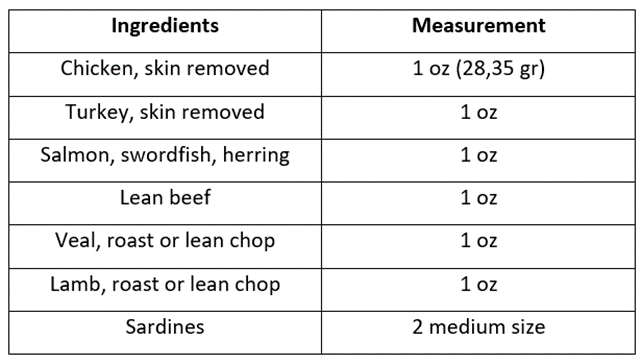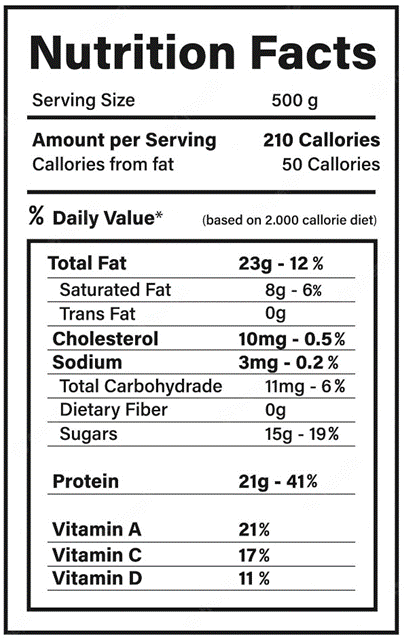More than a third of adults had protein deficiency. Despite that, its role in the body is crucial in various phases of life. Get to know the following 4 steps to meet your protein needs better.
To get the ideal nutrition status and a healthy body, we all know that we need to meet the needs of macronutrients and micronutrients on daily basis. Macronutrients include carbohydrates, proteins, and fats. While micronutrients include vitamins and minerals.
Low protein consumption is one of the alarming public health’s issues. It is not uncommon to hear the problem of protein deficiency in certain populations. For example, in the population of pregnant women, babies under the age of five, and the elderly. In addition, the Ministry of Health of the Republic of Indonesia in 2015 stated that 33.8% of the adults had inadequate protein intake. In other words, more than a third of adults’ population did not reach 80% of their protein needs on daily basis.
If protein inadequacy persists for a long time, various negative impacts on health may arise. Muscle mass decline, skin problems, infections, swelling, risk of fractures are just some few examples among many.
We certainly do not want that happen to us, do we?
Therefore, it is essential to get better at fulfilling our protein consumption. Here are 4 steps that can help you achieve your protein.
1. Learn your daily protein needs
The first thing to step up our protein consumption is by knowing the amount of protein we need per day. There are several ways to figure it out.
First, from Nutrition Recommendation that is officially published by the Ministry of Health, which provides guidance on nutrition needs, both macro and micronutrients, based on age groups. This recommendation is also equipped with additional recommendation for pregnant and breastfeeding women. The Ministry of Health in each country usually upload the document to the its official website so the public can access it easily.
Secondly, from the calculation of the daily total energy, which 10-35% of is allocated for protein. The calculation of energy a day take several factors into account, such as height, weight, age, and physical activity. Energy need’s calculators are now available on various online platforms. One of them is a calculator provided by Verywell Health.
After using the calculator, let us say that we find out that our energy need is 1800 calories. With a percentage of 10-35%, it means that we need 180-630 calories to meet our protein needs. To make it actionable, we need to translate it into gram unit by dividing the number of calories by 4. This is because 1 gram of protein equals to 4 calories. In other words, 180-630 calories are equivalent to 45-157.5 grams of protein.
Thirdly, the calculation of grams of protein per body weight. This calculation is based on muscle mass and physical activity. Based on the Recommended Dietary Intake, the daily protein requirement for healthy adults is 0.8 gr of protein per kilogram of body weight (0.8 gr/BW).
2. Know the protein content in the diet
After knowing the amount of protein that we need, the next step is to find out the protein content in foods we consume. The following is a list of foods that contain protein.

Table 1. Examples of animal-based protein sources (lean protein category)
Source: National Heart, Lung, and Blood Institute
In table 1, we can see seven foods that are sources of animal-based protein. Each of them contain around of 7 grams of protein, 2-3 grams of fat, and 55 calories of energy per serving.
This means, if we consume 1 ounce of chicken, we have fulfilled 7 grams of protein from the total protein we need a day. We can gain the rest of protein from other protein sources including the plant-based ones.
American Dietetic Association has made a table summary of various protein’s food sources. This table is called the Food Exchange Lists. We can use it to find out the protein content of each food. You can access the full table here.
For commercial food products, we can find the protein content by looking at the nutrition facts label on the back of the package. Here is an example of a nutrition fact label.

Figure 1. Example of a nutrition fact label
Photo credit: Freepik
3. Record and evaluate protein consumption
After knowing how much protein we need and how much protein in foods, we can then calculate and evaluate whether our diet has fulfilled our protein needs or not.
If yes, all we need is to maintain the current protein consumption.
If not yet, no need to be sad. Apply the fourth step to work on it.
4. Make a clear goal and plans for protein consumption
"If you fail to plan, you plan to fail". This quote is often heard as a self-development mantra. However, that could also be true in terms of our success in building a healthy diet and aiming for right the protein consumption.
If we need 40 grams of protein a day, we can make this number as a target. To make it more achievable, break down these targets into smaller targets. For example, 40 grams can be divided into 3 main meals. Which means, the protein target per main meal is about 13 grams of protein. If we refer to table 1 above (one serving of protein food is equal to 7 grams of protein), we can add up the number of serving so that it could reach about 13 grams of protein. It is even better if we come up with the exact protein menu also, such as “breakfast with roasted breast chicken”, “lunch with grilled fish”, “dinner with stir-fry shrimp”. By planning ahead of time, we give ourselves a more clarity in what we are doing and therefore we will be motivated to make it happen.
Tips: In order to avoid overconsumption of protein, pay attention to the protein content in our snacks too.
Conclusion
Protein consumption is one of the things that needs serious attention. It is because the important role it plays in supporting various functions and organs in the body. Some of the steps we can take to improve our daily protein consumption are: (1) know our protein needs, (2) learn the protein content in food, (3) record and evaluate daily protein consumption, (4) make a clear goal and strategic plans to achieve it.
Protein needs can vary from person to person based on their genes. According to nutrigenetics research in recent years, some people respond positively to a high-protein diet, but others do not necessarily give the same reaction. Meeting nutrition needs through a personal approach (personalized nutrition) is now believed to be one of the promising methods to optimize nutrition and boost health performance.
At Nalagenetics, we help you find out the protein needs based on your genetics and plan your diet accordingly with NutriReady™. Contact us via WhatsApp on wa.me/628119941440 and start your personalized nutrition journey now!





Leave a Comment